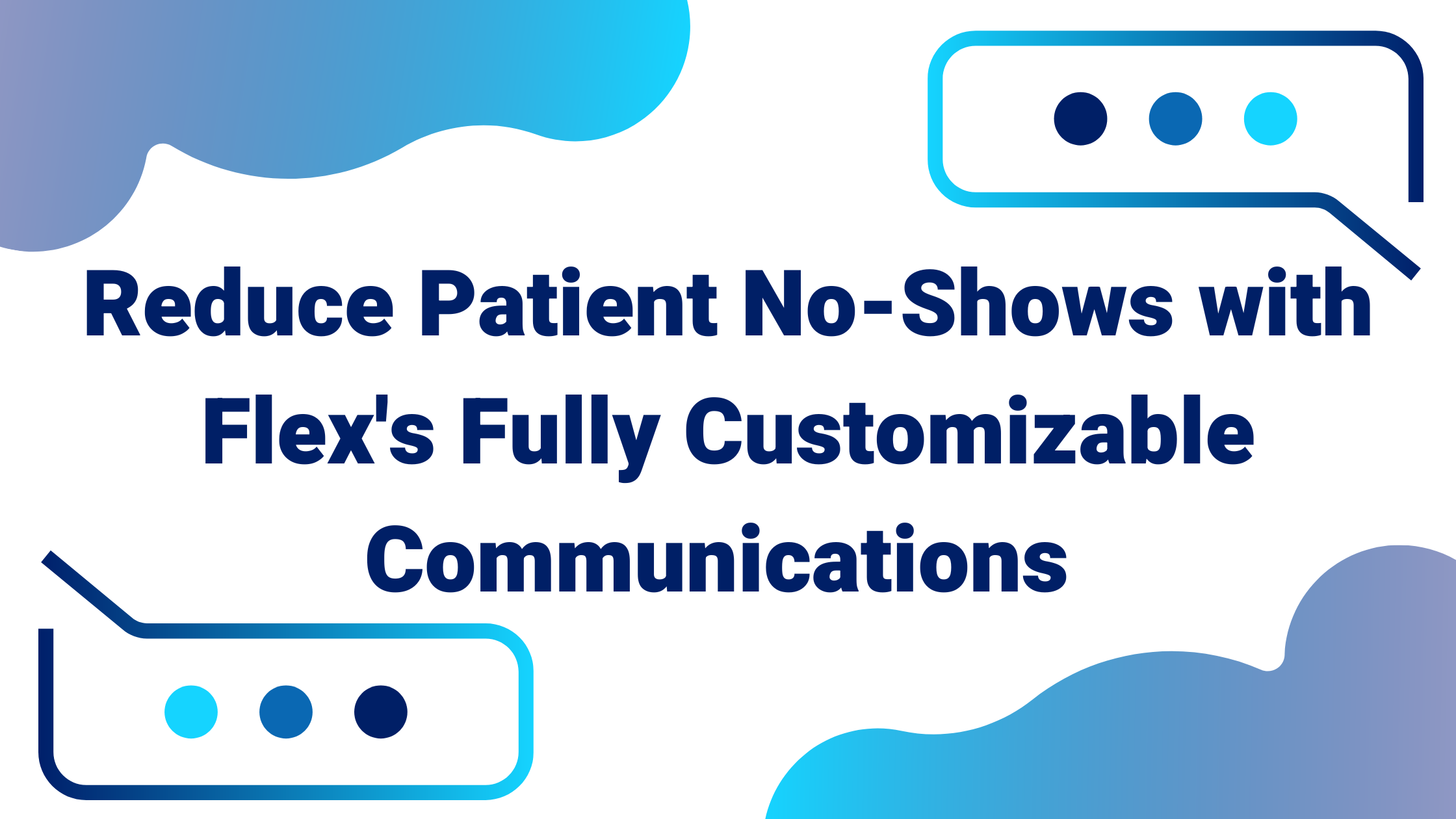
With an increasingly high rate of patient no-shows across the dental industry, Flex can help you reduce the likelihood of missed appointments.
Widespread No-Shows:
The healthcare industry at large is experiencing an increasingly high degree of patient no-shows with rates being reported at nearly 40% for health procedure appointments.1 There are many reasons why we are experiencing these incredibly high no-show rates:
- Miscommunication between patient and practice
- Patients forget or plan scheduling conflicts over the appointment
- Patient difficulty accessing transportation
- Patients seeing multiple doctors
- Long waiting times
- Inclement weather
- Fear of doctors2
And these reasons have only been exacerbated the Covid 19 pandemic and its effects.
The dental industry is not immune to no-shows or the issues they cause for practices. Luckily, Flex customers have seen that one of the most effective ways to reduce no shows is through our fully customizable communications. Here are the top 4 ways to use Flex's customizable patient communication tools to minimize the risk of no-shows and the impact they have on your practice.
1. Decide how often your Patient Receives Automatic Communications
Automatic communication is one of the main tools Flex offers that keep you and your patient on the same page and ensures appointments are running full steam ahead. It's important to be varied in your communication, though, and offer valuable reminders to your patient. Rather than sending your patient constant, uniform reminders that they may begin to ignore, use Flex to send appointment details for the patient to easily add to their calendar of choice, enabling them to upload the appointment to their personal schedule.
Flex also provides practices with tools to automatically send forms and paperwork to patients. Electronically filling out forms not only saves time on appointment day, but requires a larger commitment from the patient, encouraging them to show when scheduled.
Be varied in your automatic communications and use Flex features to provide value to your patients and establish a relationship before they even walk in the door.
2. Set up Static Reminders to your Patient
Set up repetitious reminder to the patient to ensure they do not forget the upcoming appointment. These reminders can be sent through text or email for quick touch points, or you can set a reminder for yourself to give the patient a call and establish a human touch point.
Having multiple avenues of communication keeps the patient engaged and reduces the likelihood of forgetting the appointment. This also offers patients the opportunity to let practices know if they have a scheduling conflict and will not attend, allowing your practice to open up the scheduling slot to a different patient who does intend to show.
3. Send Patient a Call to Action to Confirm their Appointment
Send a call to action to patients with upcoming appointments. CTAs are a simple way to get a direct confirmation from patients that they intend to attend their appointments. With Flex, you can easily customize wording and responses of your CTAs to meet the needs of your practice. You can also customize what constitutes as appointment confirmation replies - even as far as emojis 😁!
If the CTA is declined, you can once again re-open the proposed scheduling availability to a different patient.
4. Communicate with your Patient Day-of
At this point, you have offered your patient multiple forms of communication, reminders, and confirmations, but it never hurts to send them one final reminder on the day of the scheduled appointment. This once again ensures they remember the appointment time and don't get caught up in their day and miss the scheduled time.
Flex offers dental practices multiple forms of communication and reminders, all of which are fully customizable in wording, timing, and format, to ensure your practice is equipped with the tools it needs to diminish the harmful impact of patient no-shows.
If you have any questions about Flex, its communication features, or you want to ensure you are using our fully customizable communications to the fullest, please reach out to our team.
References
1. Lee VJ, Earnest A, Chen MI, Krishnan B. Predictors of failed attendances in a multi-specialty outpatient centre using electronic databases. BMC Health Serv Res. 2005
2. Glowacka, K., Henry, R. & May, J. A hybrid data mining/simulation approach for modelling outpatient no-shows in clinic scheduling. J Oper Res Soc 60, 1056–1068 (2009). https://doi.org/10.1057/jors.2008.177


.png?width=352&name=Blog%20Banners%20(34).png)

.png?width=352&name=Blog%20Banners%20(9).png)